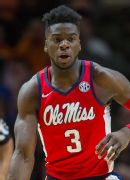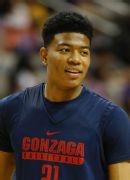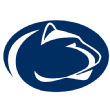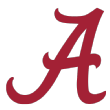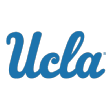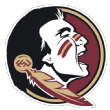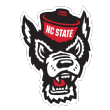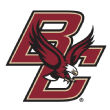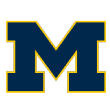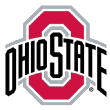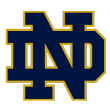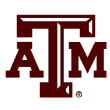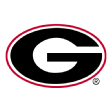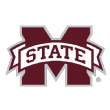Coach confidential: Marvin Bagley III or Michael Porter Jr.
Bagley or Porter? Porter or Bagley?
Since
Marvin Bagley III announced his decision in August to reclassify into the 2017 class and enroll at Duke this season, the debate over the best NBA prospect in college basketball this season has heated up. DeAndre Ayton and
Mohamed Bamba will be in the conversation, but right now, it comes down to Bagley and Missouri freshman Michael Porter Jr.
We reached out to dozens of coaches and scouts at all levels of basketball to get their take on Porter vs. Bagley before the season begins.
The case for Marvin Bagley III
Bagley was the No. 1 prospect in the 2017 ESPN 100 and might be the most highly rated prospect coming out of high school since Anthony Davis. At 6-foot-11, Bagley is very fluid and skilled for someone his size. He was dominant on the AAU circuit during the spring and summer, averaging 25.5 points, 14.7 rebounds and 3.0 blocks -- while getting to the free throw line nearly 10 times per game.
Rebounding and versatility were key factors in some scouts choosing Bagley over Porter.
"He can play inside-out," one college coach said. "He can impact winning a little bit more because he rebounds at a high level. Inherently, he rebounds at a high level. He can play multiple positions, he can play 3 through 5. He can play post D. Both guys are super talents, but I just think Bagley will be the better player. He doesn't just rely on one avenue of his game, he can put it on the floor and he can post."
"I think the kid is legitimately a great rebounder," one Eastern Conference executive said. "That's a skill that will translate."
Bagley was the focal point of both his high school and AAU teams, particularly the latter, but that won't be the case at Duke.
Trevon Duval and
Grayson Allen are going to be doing most of the playmaking, while Wendell Carter will do his damage on the block. There might be times where Bagley is playing alongside Carter and 6-foot-11
Marques Bolden or 6-foot-10
Javin DeLaurier. In other words, Bagley might not have elite scoring numbers, but he'll have the freedom to find spots to produce offensively -- and also won't be the focal point of the defense every night.
Expect Bagley to get most of his offense in the open floor or on the offensive glass.
"His size is just so uncommon for high school guys," a college assistant said. "Add the length, and it's like holy s---. He does it at every level, and he's outstanding. His size, his length, his athleticism, allows him to be super, super productive, which is a big part of why people like him. If he wants to, he can get 20 rebounds. He's taller, more athletic and longer than everyone else. He gets his own miss a lot."
Compared to Porter, some scouts and coaches liked Bagley's attitude and mental makeup better too.
"His skill set, motor, mental mindset of wanting to compete and win," one scout said. "Seeing him play in the Drew League this summer, going against high-level pros -- NBA and overseas level -- and hold his own was impressive. Plus the kid is quiet and wants to just play. Not Hollywood at all. Duke is only going to get him better."
The case against Marvin Bagley III
On some level, Bagley is still somewhat of a mystery to NBA people. Because he reclassified, he didn't play in any of the postseason all-star games, which NBA executives are allowed to attend. Moreover, Bagley hasn't attended any USA Basketball events since 2014. He played on a bad AAU team and also sat out a year of high school.
Obviously, scouts will have plenty of chances to see him this season for Duke, but his surprising lack of exposure is a factor for now.
On the court, some are concerned about Bagley's ability to impact the game consistently at the next level, since he no longer will have a significant size, length and speed advantage.
"Unless I'm missing something, I don't look at him as someone who's going to consistently make 3s, and do the passing and ballhandling," one college coach said. "Where does he get in? Where does his productivity come from? It's going to come from running the floor and driving in straight lines and getting to the glass. And that to me, that's a good player. That's not Anthony Davis."
Bagley has drawn comparisons to Chris Bosh, and one coach compared his potential to that of a Joel Embiid-type of player. In order words, supertalented -- but not an All-NBA player.
"Bagley is versatile, yes, but does he handle the ball better than Porter? Shoot it better than Porter? More athletic? No," he said. "Maybe he passes better than Porter, sure. But Porter is a wing; Bagley is a big. The modern NBA game is versatile wings, versatile guards, guys that can be high-usage players, guys that rebound, guys that can score. Marvin Bagley is going to have a really, really, really good NBA career, but he's not a first banana on a good team. The game is just not [like that]."
The case for Michael Porter Jr.
Porter wasn't always a clear-cut candidate for No. 1 in 2017. Ayton held that spot early on, and Bamba made strides throughout his high school career. By the time all-star games ended last spring, though, it was clear Porter belonged atop the rankings.
"Porter is a more athletic version of Jayson Tatum," one college coach said. "He's every bit of 6-foot-10. Freakishly athletic. He's a lock NBA All-Star in a couple years. His fluidity, the ease with which he can score, the midrange, getting in transition, the athleticism."
"He can probably score 15 a game right now in our league," an NBA executive added. "He makes tough shots, contested, pull-up, he just can score. Wouldn't shock me if he led the country in scoring this year in college. He just gets buckets."
Porter averaged 36.2 points, 13.6 rebounds and 5.0 assists as a senior at Nathan Hale High School (Seattle), and will have the chance to put up monster numbers at Missouri this season. The Tigers will likely run their entire offense through Porter.
He was the centerpiece of Cuonzo Martin's last-minute recruiting class after taking over at Missouri, as Porter decommitted from Washington following Lorenzo Romar's firing (which meant Porter's father, an assistant at Washington, was also back on the market). Three more ESPN 100 recruits followed, including Porter's brother Jontay, as did Canisius graduate transfer
Kassius Robertson, but Porter is still clearly the go-to guy. He took eight more shots than anyone else in the team's exhibition game against Kansas, nearly 28 percent of the Tigers' total field goal attempts.
"He might have a whole year of Mike Beasley, Kevin Durant [usage]," a coach said. "Every time down the floor they're running a play for him. It will better prepare for him to be what he needs to be."
The biggest advantage coaches and scouts gave to Porter over Bagley was the fact he can consistently make perimeter jumpers, and his game translates very well to the next level.
"He's a really, really good shooter at 6-foot-10," one NBA scout said. "Regardless of what happens or doesn't happen with his game, that will get him pretty far."
The case against Michael Porter Jr.
There are some knocks on Porter that have been around since he burst onto the scene early in his high school career.
"I don't think Porter brings it 100 percent every single time out," one coach said. "He needs to get stronger, tougher, more consistent."
The criticisms of Porter have lessened over the past year or so, with one coach pointing to Porter's developing a mean streak on the EYBL circuit two summers ago as a sign that he is capable of being tougher, both mentally and physically.
Porter's perimeter game is what makes him attractive at the next level, but he needs to fine-tune certain aspects of his offensive game. He's a dominant right-hand driver, and will have to improve his ballhandling ability, especially going to his left.
Some evaluators are also worried about his ability to make people around him better.
"Can he finish at the rim? He doesn't have the quickest first step," one NBA scout said. "Is he going to be able to rise up on people from 17 feet in our league? [So it's] making plays for others. I saw flashes. He's got good enough vision. He knows how to play. It's like he passes because he absolutely has to. A night he doesn't have it going, can he make plays for others?"
Come March, Porter will undoubtedly have better numbers than Bagley, simply because of his role at Missouri. Will they be more impressive, though? Multiple NBA scouts referred to his performance in the exhibition game, where he finished with 21 points on 6-of-20 shooting.
"You're probably going to see a lot of nights like that," one NBA executive said.
"He might score 20 a game," another added. "But it won't be an efficient 20."











